Modelling of potential energy surfaces for photochemistry: conical intersections and application to optical control
llistat de metadades
Autor/a
Director/a
Blancafort San José, Lluís
Data de defensa
2014-09-19
Dipòsit Legal
Gi. 1856-2014
Pàgines
145 p.
Departament/Institut
Universitat de Girona. Departament de Química
Universitat de Girona. Institut de Química Computacional
Resum
Conical Intersections (CI) are points in Potential Energy Surfaces (PES) of two or more states that have the same energy. They are fundamental to understand photo-chemical processes. These points are not isolated points, CI form seam between PES. One way to study they is to find the minimum energy CI (MECI). For this reason, in this thesis, a new algorithm for finding MECI has been proposed: Double Newton-Raphson (DNR). The algorithm has been implemented in Gaussian® program for fully-quantum calculations and ONIOM ones. It has been tested with other algorithms with a test set with correct results. Using studies of PES and MECI is possible to propose new strategies for control photo-processes. In this thesis, a new control strategy has been proposed for controlling the fulvene photo-rotation, using two different lasers, resonant and non-resonant, to obtain a Stark effect. This strategy has been simulated with quantum molecular dynamics. The simulations show that the control is achieved
Les Interseccions Conques (CI) són punt en la Superfícies d'Energia Potencial (PES) de dos o més estats amb la mateixa energia. Son essencials per entendre els processos fotoquímics. Aquest punts no estan aïllats, les CI formen interseccions entre les PES. Una manera d'estudiar-los és trobant els mínims d'energia (MECI). Per aquest motiu, en aquesta tesis, un nou algoritme ha estat proposat: Double Newton-Raphson (DNR). El DNR ha estat implementat en el programa Gaussian® per càlculs totalment quàntics i ONIOM. Aquest ha estat provat juntament amb altres algoritmes amb un test set amb correctes resultats. Utilitzant els estudis de la PES i els MECI és possible proposar noves estratègies per controlar foto-reaccions. En aquesta tesis, una nova estratègia de control ha estat proposada per tal de controlar la foto-rotació del fulvè, utilitzant dos làsers diferents, un ressonant i un altre no-ressonant per obtenir un efecte Stark. Aquesta estratega ha estat simulada amb dinàmiques moleculars quàntiques. Les simulacions mostres que s'aconsegueix el control
Paraules clau
Conical intersections; Interseccions còniques; Intersecciones cónicas; Optical control; Control òptic; Control óptico; Algorithm; Algoritme; Algoritmo; Photophysics; Fotofísica; Fulvene; Fulvè; Fulveno; Dynamics; Dinàmica; Dinámica
Matèries
53 - Física; 54 - Química



